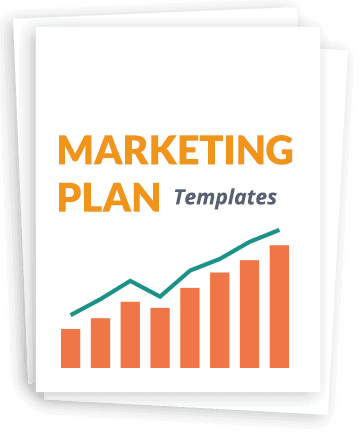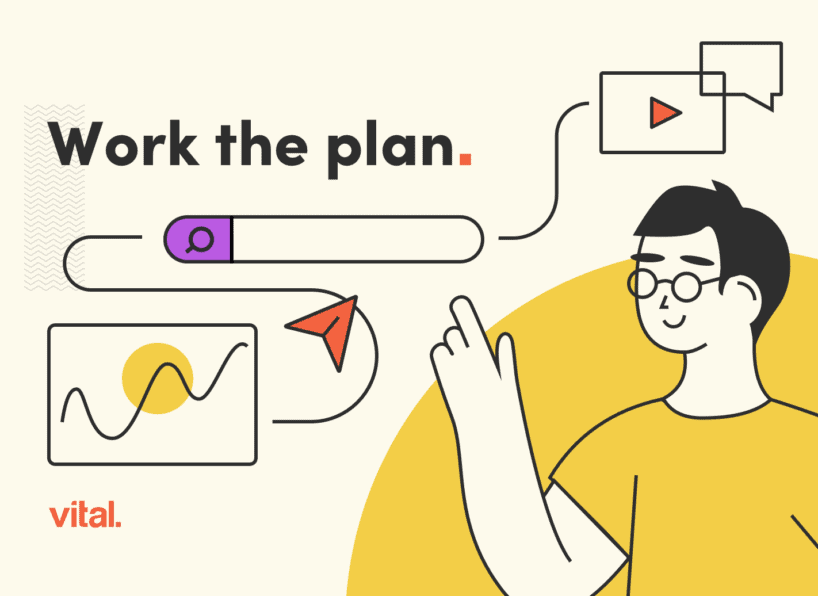The best thing about digital marketing is that there isn’t a global pandemic, time zone, or other logistical inconvenience that can get in its way. And there’s no better example of the power of digital than webinars.
Webinars serve a valuable purpose: bringing people together, regardless of their location. Was the tradeshow you were to present at canceled? Turn your talk into a webinar. Customers can’t make it to a live demo? Make it a webinar.
But before you get started, there are webinar best practices that should be followed to a T if you want to see success. Read on for our 10-step guide to how you can create a webinar, as well as best practices and tips to follow along the way.
Looking to augment your marketing tactics? Check out the recorded version of our webinar, “How to Use Webinars to Pivot Your Marketing.” That’s right — it’s a webinar about webinars!
Why You Should Host a Webinar
Webinars open up a ton of opportunities for businesses of any size and in any industry. Here are a few of the reasons why learning how to create a webinar is a good business decision:
- Generate high-quality leads: People who register for your webinar will need to provide information (email address, phone number, etc.) that you can use to nurture them long after the webinar ends.
- Build your brand’s authoritativeness: Hosting a webinar is a way to prove your chops. You’re an expert in your field, and a webinar helps you get in front of potential leads who may not have known how awesome you are.
- Reach a bigger audience: An hour-long sales meeting will get you in front of a handful of people, maybe. An hour-long webinar can bring hundreds (or even thousands!) of people to you.
- Create reusable content: Record your webinars and then offer them as resources on your website. As gated content, you can continue to capture leads well after the webinar has ended.
How to Create a Webinar: A 10-Step Guide
Step 1: Pick a Webinar Platform
The first step is to research webinar platforms and find the one that will work best for you and your audience.
Vital likes GoToWebinar, but there are tons of options out there. Here’s a quick comparison of features from a few of the most popular platforms:
| Features | GoToWebinar | Livestorm | ClickMeeting | Zoom | BigMarker |
|---|---|---|---|---|---|
| Monthly Starting Price | $49+ | $39+ | $25+ | $12.49/user+ | $79+ |
| Free Trial | Yes | Yes | Yes | No | Yes |
| Attendees | Up to 3,000 | Up to 1,000 | Up to 1,000 | Up to 10,000 | Up to 10,000 |
| Custom Branding | Yes | Yes | No | Yes | Yes |
| On-Demand Webinars | Yes | Yes | Yes | No | Yes |
| Polls & Voting | Yes | Yes | Yes | Yes | Yes |
| Q&A | Yes | Yes | Yes | Yes | Yes |
| Reporting & Analytics | Yes | Yes | Yes | No | Yes |
You can see by the chart that every platform is different. ClickMeeting doesn’t offer custom branding, Zoom doesn’t offer reporting and analytics, and so on. The more you need from your platform, like the number of attendees, the more you’ll have to pay. Do your research and sign up for free trials (if available) to get a feel for each option.
Step 2: Choose a Topic & Presenters for Your Webinar
You may already have an idea of what you want to talk about during your webinar. Take that idea, throw it out the window, and start fresh. There’s a good chance that what you want to talk about has nothing to do with what your audience needs to know.
Unless your webinar is a demo, you should avoid sales-focused topics. Don’t think about what you can sell or promote. Think about your buyers’ pain points and how you can help them solve their challenges. Then, you’ll be able to tailor your topic and content around what they need to hear.
The people you choose to host the webinar matter just as much as the topic. You need speakers who have expertise in their field and who can speak with authority. It also helps to make sure the speakers are comfortable on camera.
Step 3: Select a Date & Time for Your Webinar
Where is your target audience located? You’ll need to consider time zones here, as a 9:00 a.m. webinar on the East Coast will be way too early for those out west.
GoToWebinar found that webinars held on Thursdays at 11:00 a.m. attract the most registrants and attendees. If you have an audience that spans several time zones, GoToWebinar recommends Thursdays at 12:00 p.m. PST / 3:00 p.m. EST.
Step 4: Create Your Webinar Content
This is the most labor-intensive step. You’re going to need the following pieces of content:
- Script: Even if you’re more comfortable winging it, you should have a script that you can reference in the event that your mind goes blank (which can very well happen to anyone).
- Presentation: This is what will be on screen during the webinar. Sure, you can have your presenters show their faces for a bit, but you’ll need slides to keep people engaged. Be sure to hook the audience quickly in your presentation by incorporating a poll, statistics, or another stand-out piece of information. You can use presentation templates that help you create professional-looking slides quickly and easily, saving you time and effort in the process.
- Registration page: This is where you’ll describe what your webinar is about with the goal of enticing people to sign up. Most webinar platforms have tools that make it easy to create this page. Just remember to include:
- What people will learn in the webinar
- A short bio about the presenters, including their job titles and expertise in relation to the topic
- The date and time of the webinar
- Emails: You’ll need to create a lead nurture campaign that includes emails to promote the webinar, remind people to attend, thank people for attending, and any other types of follow-ups.
- Social media posts: Promote the webinar to your followers on all of your social media channels.
- Blog posts: Use keyword research to write a post about your webinar topic. After the webinar, you can add the recorded version to your post.
- Website promotions: Add exit overlays, CTAs, and homepage banners announcing your upcoming webinar.
Make sure that all of this content is consistently branded and matches your website so that you can establish trust with your attendees.
Step 5: Promote & Invite Attendees
Now it’s time to put that content to work!
GoToWebinar found that most people register for webinars on Tuesdays, so this is the best day to distribute promotional emails and social media posts.
Just be cautious about how soon you’re promoting your webinar. GoToWebinar also says that 69% of registrations happen 1 week before the big day, and 33% of people register the day of the webinar.
Step 6: Do a Practice Run
Don’t skip this step! It’s crucial that your audio, webcam, presentation, and webinar platform are ready to go.
You don’t want to find out 5 minutes before your webinar that your webcam is busted or that there are tons of spelling mistakes in your presentation. Run through your full webinar at least a week before the big day. Invite coworkers to sit through to provide feedback that you, as a host, might not even notice.
Step 7: Prep Your Studio Space
Where is the best place to host your webinar? Consider the background people will see if you’re going to be on camera, as well as any noises or distractions that could come up.
Are you hosting the webinar from home? Keep pets and kids away, and let anyone else in your home know that you’ll be presenting. If you’re conducting the webinar from the office, find a quiet room and put some type of “Do Not Disturb” sign on the door.
You should mute anything that you won’t be using during the webinar, like your phone and email notifications on your computer. Also, make sure any tech you’re using is plugged in and charging.
Step 8: Host Your Webinar
The day is finally here! Log into your webinar platform early so that you can start on time. Your attendees are busy, and even starting a few minutes late could lead you to lose their focus.
Remember to encourage audience participation. Ask questions and get them involved to keep their attention. Also, don’t forget to record!
Step 9: Follow Up
Now the fun really begins. After the webinar, you’ll have new email addresses and contacts to nurture. There are several ways to do this:
- Send a “Thank You” email: For those who attended the webinar, send a quick thank you note with a link to the recorded webinar. You can also include relevant content they might like, such as a blog post or eBook.
- Gauge their interests: Ask attendees to complete a quick survey to find out what the liked and didn’t like about the webinar. You can also ask them about other topics they’d be interested in for your next webinar.
- Remember those who didn’t attend: Some people who register for the webinar might not actually attend. But you can still nurture these people. Send them a link to the recorded webinar with “sorry we missed you” type of messaging. From there, you can create a lead nurture campaign to keep them interested.
Step 10: Analyze the Results
Your webinar will produce plenty of trackable metrics that you can then use to make your next webinar even better than the first! Some of these metrics include:
- How many people registered
- How many people attended
- Where registrations came from (social media, email, etc.)
- How long attendees stayed
- The results of any polls or surveys
Webinar Frequently Asked Questions
Q: When is the best time to hold a webinar?
A: Webinars held on a Thursday at 11:00 a.m. have been found to attract the most registrants and attendees, according to an analysis of over 350,000 webinars by GoToWebinar.
If your registrants and attendees are on both coasts, GoToWebinar recommends hosting your webinar on a Thursday at 12:00 p.m. PST / 3:00 p.m. EST.
Q: How long should a webinar be?
A: Webinars typically run between 30 to 60 minutes. GoToWebinar found that the average attendee viewing time is 61 minutes, and 90-minute webinars attract 4.6x as many registrants as a 30-minute webinar.
Try conducting a test run of your webinar before you nail down an exact length. The ideal length for your webinar will depend on the format, topic, level of audience participation you expect, and other variables.
Q: What webinar equipment do I need?
A: Just a few key items:
- A desktop, laptop, or tablet that can connect to the internet.
- Access to a webinar platform (GoToWebinar, Zoom, etc.)
- A webcam and audio input.
- A topical presentation for your audience to view while you’re talking.
Q: How much does it cost to run a webinar?
A: Not as much as you may think! As mentioned in the previous question, you likely already have much of the technology you’ll need (computer, webcam, internet access, etc.). Now you’ll just need a webinar platform like GoToWebinar, Webex, ClickMeeting, Zoom, etc. Many of these providers offer free trials so you can get a feel for the technology before committing to a plan.
Ready to rock? We’ll help you put together a webinar strategy and get you up and running. Contact us to get started.





